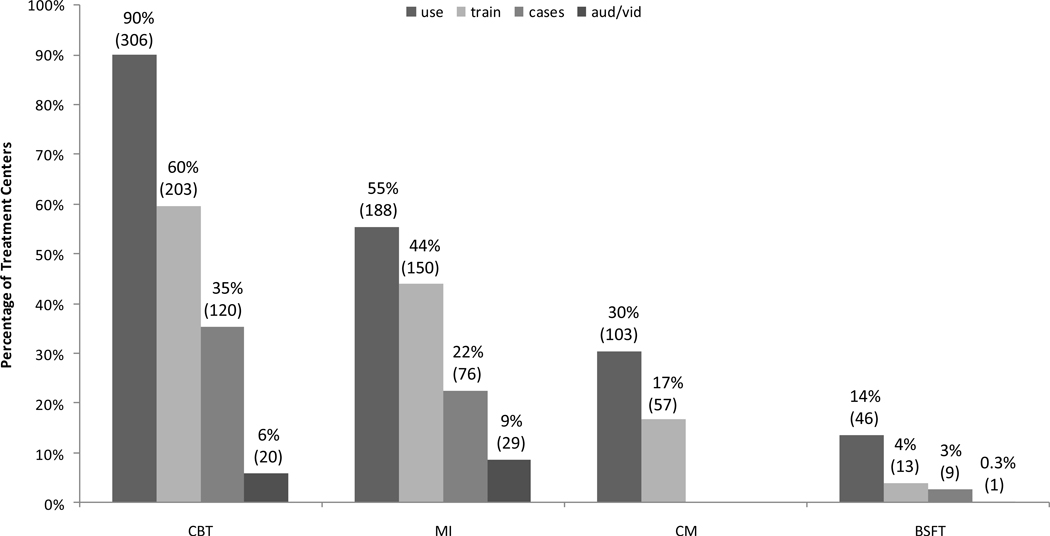Figure 1a,b.
By EBP, the percentage (and number) of treatment centers that (a) currently use the EBP; (b) provide counselors with formal training in the EBP (either in-house or off-site); (c) include supervised training cases in the formal training; and (d) include training cases that are videotaped or audiotaped and then reviewed by a supervisor.
aStudy sample comprised N = 340 substance abuse treatment centers. Percentages (counts in parentheses) are the percentage (number) of centers that answered ‘yes’ to the following four questions: “Use” = Is the EBP currently used in this center?; “Train” = Does this center provide its counselors with formal training in the EBP (either in-house or off-site)?; “Cases” = Does the training include supervised training cases?; “Aud/Vid” = Are training cases videotaped or audiotaped and then reviewed by a supervisor?
bQuestions involving the use of supervised training cases were not asked for CM.

